I tried to find the most recent activity (FilteredActivity) for all open opportunities (FilteredOpportunity) in my MicrosoftDynamics CRM 2016. What sounds so simple is rather complicated because activities may be related to contacts OR to directly to opportunities. So that problem boils down to the question of how can I combine two resultsets and then select the most recent activity out of the combination of two resultsets:
* one which delivers the most recent activity per opportunity
* one which delivers the most recent activity per account (per contact)
This will need unions. To understand the whole problem I visualized the relationship in a diagram below.:

For resultset 1 Gordon Linoff and delivery this very efficient query:
For resultset 2 GMB delivered a very clever query:
Both results are valid and very performant. Both resultsets can be designed to deliver the same structure: activities related to opportunities.
So for resultset 1 I prepared the following query:
select fac.name as accountname, fa.actualend, fa.description, fa.activitytypecodename, fa.activitytypecode, fac.accountid, opp.opportunityid, opp.name as opportunityname
from FilteredAccount fac cross apply
(select top (1) fa.*
from FilteredActivityPointer fa
where fa.regardingobjectid = fac.accountid and fa.statecode = 1 and fa.activitytypecode != 10004
order by fa.actualend desc
) fa
Join FilteredOpportunity opp on opp.accountid = fac.accountid and opp.statecode = 0
and for resultset 2 I prepared the following query:
select t.name as accountname, t.actualend, t.description, t.activitytypecodename, t.activitytypecode, t.accountid, t.opportunityid, t.opportunityname
from (
select ac.accountid, opp.name as opportunityname, opp.opportunityid, ac.name, fa.actualend, fa.description, fa.activitytypecodename, fa.activitytypecode, row_number() over(partition by ac.accountid order by fa.actualend desc) rn
from FilteredContact co
inner join FilteredActivityPointer fa
on fa.regardingobjectid = co.contactid
and fa.regardingobjecttypecode = 2
and fa.activitytypecode != 10004
inner join FilteredAccount ac
on ac.accountid = co.accountid
inner join FilteredOpportunity opp
on opp.accountid = ac.accountid
and opp.statecode = 0
) t
where rn = 1
I tried to arrange the resultsets with equal column names.
Now i used union to combine both result sets:
select allactivities.accountname as accountname, allactivities.actualend, allactivities.description, allactivities.activitytypecodename, allactivities.activitytypecode, allactivities.accountid, allactivities.opportunityid, allactivities.opportunityname
from
(
(select fac.name as accountname, fa.actualend, fa.description, fa.activitytypecodename, fa.activitytypecode, fac.accountid, opp.opportunityid, opp.name as opportunityname
from FilteredAccount fac cross apply
(select top (1) fa.*
from FilteredActivityPointer fa
where fa.regardingobjectid = fac.accountid and fa.statecode = 1 and fa.activitytypecode != 10004
order by fa.actualend desc
) fa
Join FilteredOpportunity opp on opp.accountid = fac.accountid and opp.statecode = 0
)
Union
(select t.name as accountname, t.actualend, t.description, t.activitytypecodename, t.activitytypecode, t.accountid, t.opportunityid, t.opportunityname
from
(
select ac.accountid, opp.name as opportunityname, opp.opportunityid, ac.name, fa.actualend, fa.description, fa.activitytypecodename, fa.activitytypecode, row_number() over(partition by ac.accountid order by fa.actualend desc) rn
from FilteredContact co
inner join FilteredActivityPointer fa
on fa.regardingobjectid = co.contactid
and fa.regardingobjecttypecode = 2
and fa.activitytypecode != 10004
inner join FilteredAccount ac
on ac.accountid = co.accountid
inner join FilteredOpportunity opp
on opp.accountid = ac.accountid
and opp.statecode = 0
) t
where rn = 1
)
) allactivities
results seem ok up to here.
Now I used the "over (partition)" method a second time, resulting in:
select activity.accountname, activity.actualend, activity.description, activity.activitytypecodename, activity.activitytypecode, activity.accountid, activity.opportunityid, activity.opportunityname
from
(
select allactivities.accountname as accountname, allactivities.actualend, allactivities.description, allactivities.activitytypecodename, allactivities.activitytypecode, allactivities.accountid, allactivities.opportunityid, allactivities.opportunityname, row_number() over(partition by allactivities.accountid order by allactivities.actualend desc) row_nr
from
(
(select fac.name as accountname, fa.actualend, fa.description, fa.activitytypecodename, fa.activitytypecode, fac.accountid, opp.opportunityid, opp.name as opportunityname
from FilteredAccount fac cross apply
(select top (1) fa.*
from FilteredActivityPointer fa
where fa.regardingobjectid = fac.accountid and fa.statecode = 1 and fa.activitytypecode != 10004
order by fa.actualend desc
) fa
Join FilteredOpportunity opp on opp.accountid = fac.accountid and opp.statecode = 0
)
Union
(select t.name as accountname, t.actualend, t.description, t.activitytypecodename, t.activitytypecode, t.accountid, t.opportunityid, t.opportunityname
from
(
select ac.accountid, opp.name as opportunityname, opp.opportunityid, ac.name, fa.actualend, fa.description, fa.activitytypecodename, fa.activitytypecode, row_number() over(partition by ac.accountid order by fa.actualend desc) rn
from FilteredContact co
inner join FilteredActivityPointer fa
on fa.regardingobjectid = co.contactid
and fa.regardingobjecttypecode = 2
and fa.activitytypecode != 10004
inner join FilteredAccount ac
on ac.accountid = co.accountid
inner join FilteredOpportunity opp
on opp.accountid = ac.accountid
and opp.statecode = 0
) t
where rn = 1
)
) allactivities
) activity
where row_nr = 1
And voila!
Please take into account that I used added "union" to the solution. The real solution to the problem above was delivered by Gordon Linoff and GMB. Without the help of those brilliant SQL-gurus, I wouldn't be able to do so!

